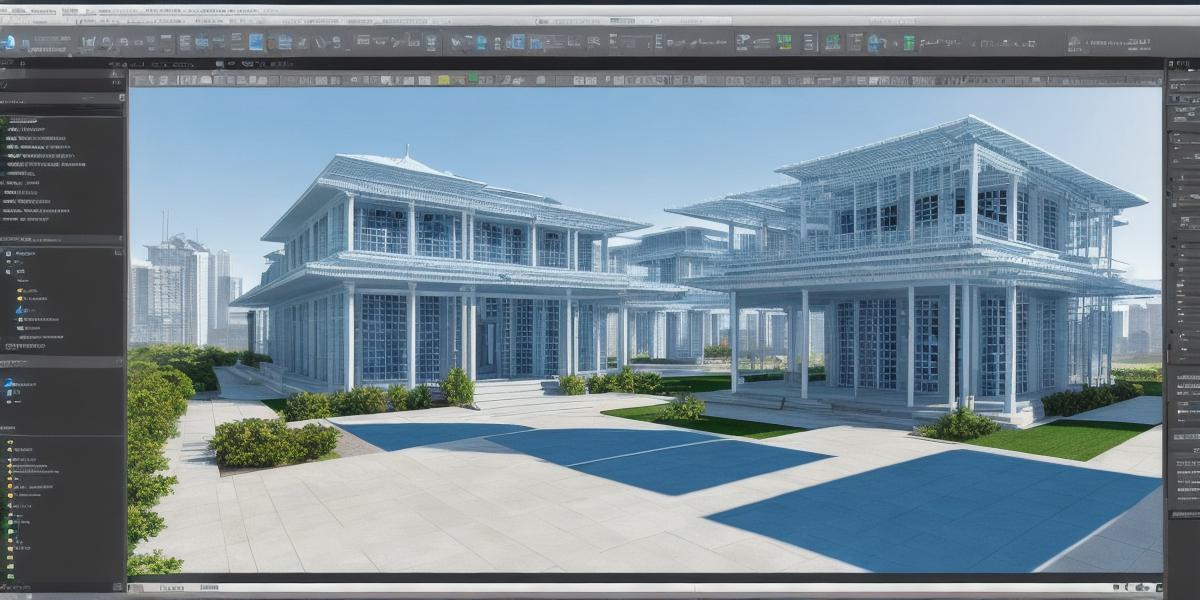The use of artificial intelligence (AI) technology is rapidly transforming the field of 3D modeling, allowing developers to create highly accurate and realistic 3D models from blueprints. With the ability to quickly and easily convert 2D drawings into 3D models, AI-powered tools are revolutionizing the way we design and build structures, making it easier than ever before to bring our ideas to life. In this article, we’ll explore how AI technology is being used to transform blueprints into 3D models and the benefits that come with this exciting new development.
The Importance of Accurate 3D Models
Before the advent of AI-powered tools for converting blueprints into 3D models, creating accurate 3D representations was a time-consuming and error-prone process. This often involved manually tracing the lines on a drawing onto a 3D modeling platform or using specialized software to create a 3D model from scratch. These methods were not only labor-intensive but also prone to human error, which could result in significant delays and cost overruns.
With AI-powered tools, however, the process of creating 3D models has been greatly streamlined. By leveraging machine learning algorithms and computer vision techniques, these tools are able to automatically recognize patterns and shapes in blueprints, allowing developers to quickly and easily create highly accurate 3D representations with minimal effort. This not only saves time but also reduces the risk of errors, ensuring that projects are completed on time and within budget.
The Role of AI in Converting Blueprints into 3D Models
There are several key components involved in the process of converting blueprints into 3D models using AI technology. These include:
- Computer vision algorithms: These algorithms are used to analyze the lines and shapes on a blueprint, identifying key features such as walls, floors, and roofs. This information is then used to create a 3D model of the structure.
- Machine learning models: By training machine learning models on large datasets of blueprints, AI-powered tools are able to recognize patterns and relationships between different elements of a drawing. This allows them to automatically generate highly accurate 3D models that closely match the design intent of the original blueprint.
- 3D modeling software: Once the AI algorithms have generated a 3D model from the blueprint, it can be further refined and customized using specialized 3D modeling software. This allows developers to make changes such as adding textures, materials, and lighting effects, creating a highly realistic representation of the structure.
Benefits of Using AI-Powered Tools for Converting Blueprints into 3D Models
The use of AI technology for converting blueprints into 3D models offers several key benefits, including:
- Increased efficiency: By automating the process of creating 3D models from blueprints, AI tools are able to significantly reduce the amount of time and effort required to complete this task. This allows developers to focus on other aspects of their work, such as designing and planning, rather than spending hours manually creating 3D models.
- Improved accuracy: By using machine learning algorithms to recognize patterns and relationships between different elements of a blueprint, AI tools are able to create highly accurate 3D models that closely match the design intent of the original drawing. This can help to reduce errors and ensure that projects are completed on time and within budget.
- Greater flexibility: With the ability to quickly and easily create 3D models from blueprints, developers have greater flexibility in terms of how they approach their work. This allows them to experiment with different designs, materials, and textures, creating a more dynamic and engaging design process.
- Cost savings: By reducing the amount of time and effort required to create 3D models, AI-powered tools are able to help
